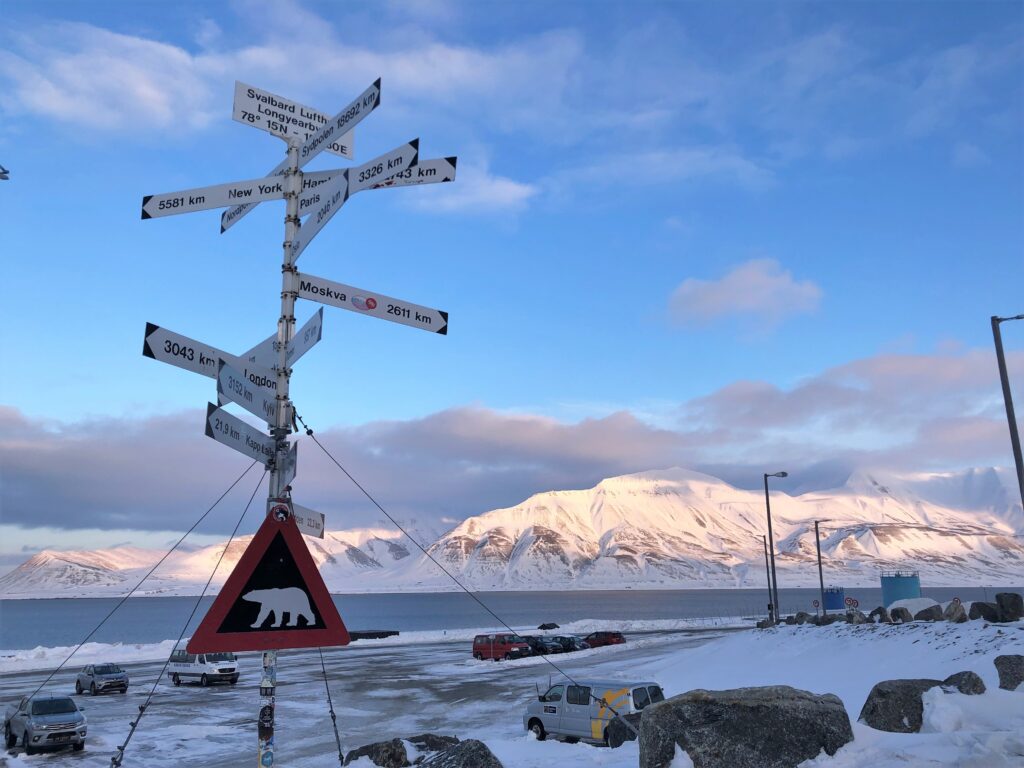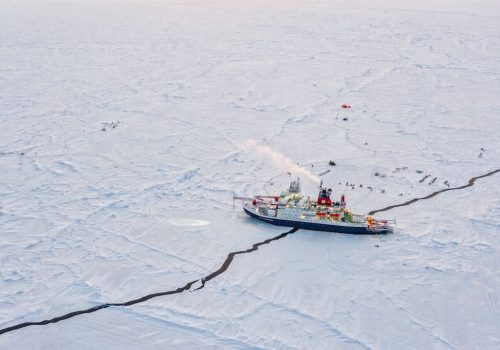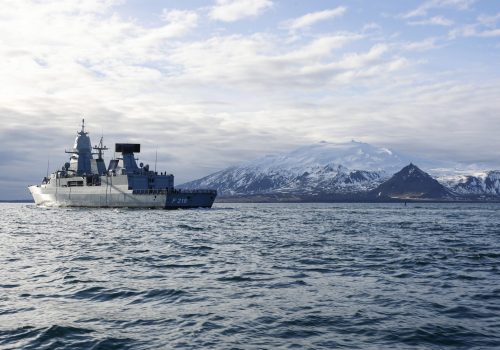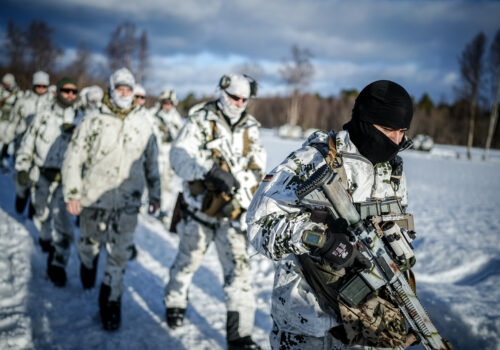SVALBARD, NORWAY—Even in summer, the air is clear and cold in Longyearbyen, the world’s northernmost inhabited town, which is located above the Arctic Circle in Norway’s Svalbard archipelago. The message from officials we recently spoke with there was clear, too, but also chilling: In the High North, the geopolitical dynamics are shifting, and the tensions are getting worse.
The “High North” is a somewhat fluid concept, but it generally encompasses the space between Norway’s Arctic, west to Greenland, and east to one of the most nuclearized places in the world, Russia’s Kola Peninsula. It also usually includes northerly regions of NATO allies Finland, Sweden, Denmark, and Iceland, as well as surrounding waterways.
Although the High North was not a focus of the recent NATO Summit in The Hague, the situation in Svalbard should be squarely in NATO’s focus going forward. Russian President Vladimir Putin appears to view the High North as increasingly important to Russia’s military security and as an evocative element of Russia’s national identity. It is the home to the core of Russia’s nuclear second-strike capability: Russia’s submarine-launch ballistic missile-capable fleet. This fleet is based in Severomorsk, Murmansk, tucked behind the Kola Peninsula, about 990 miles from Svalbard. Russian submarines must cross the shallow waters of the Barents Sea through the Greenland-Iceland-United Kingdom (GIUK) Gap to gain access to the depths of the broader Atlantic Ocean, where detection is far more difficult.
The complex Arctic
“The Arctic” is not a monolithic place. The term covers vast distances, geographic variations, and geostrategic spheres of influence. There is the European High North and the Siberian Arctic. There’s also the Pacific Arctic, which includes Alaska and far eastern Russia, as well as the Canadian Arctic. China is not an Arctic nation, although it serves as an observer of the Arctic Council and refers to itself as a “near-Arctic state.” China relies on Russian passage heading north through the Bering Strait (past Alaska and, therefore, NATO territory) and along Russia’s northern coast to transit the Arctic.
Then there is the vast North Pole waterways and ice. Although shipping increased by 37 percent between 2013 and 2023, the Arctic remains a dangerous place. It is not yet a fully functioning trade and military superhighway, or “the new Suez,” as it is sometimes portrayed in the press. There is little immediate help for a disabled ship in distress in the most northerly Arctic routes. The Polar Code, which is mandatory in the polar regions and implemented by the International Maritime Organization, aims to reduce accidents and protect the environment. Still, there are frequent reports of ships getting stuck for weeks, such as the Sparta III, which became stranded for a month off Dudinka, Russia, in late 2020. Scientists have also recorded severe weather events and phenomena, such as atmospheric rivers that make navigation unpredictable and treacherous. Consequently, shipping insurance rates remain very high. And the distances are vast. From Longyearbyen (a three-hour flight from Oslo), it is still another 817 miles to the North Pole.
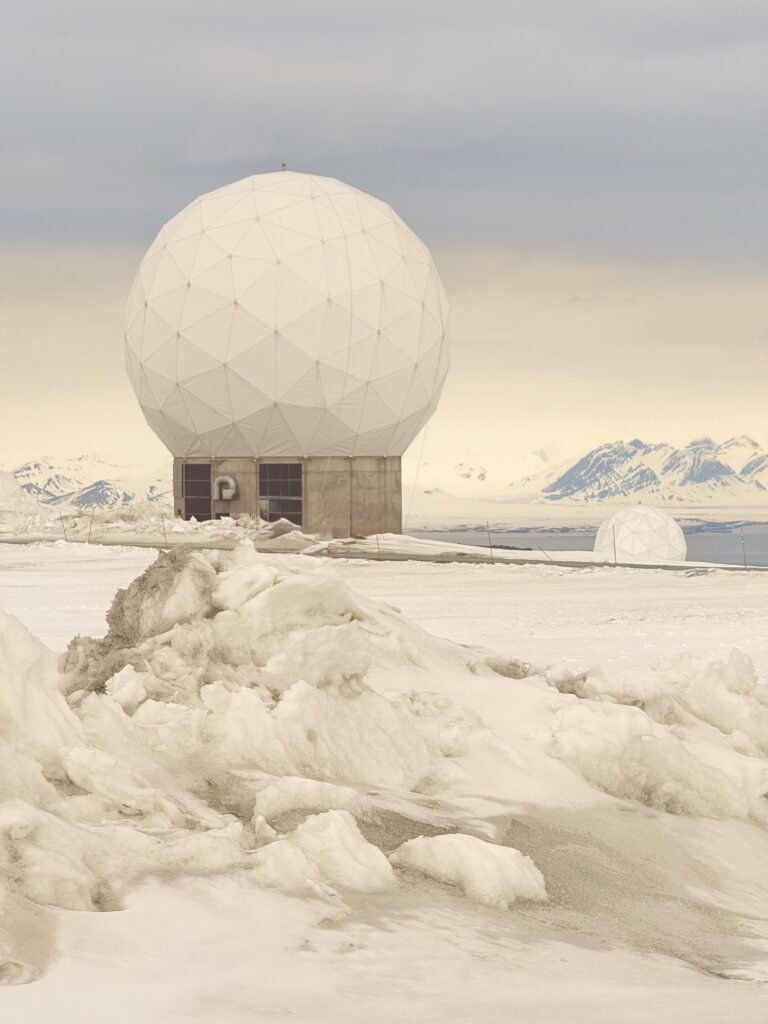
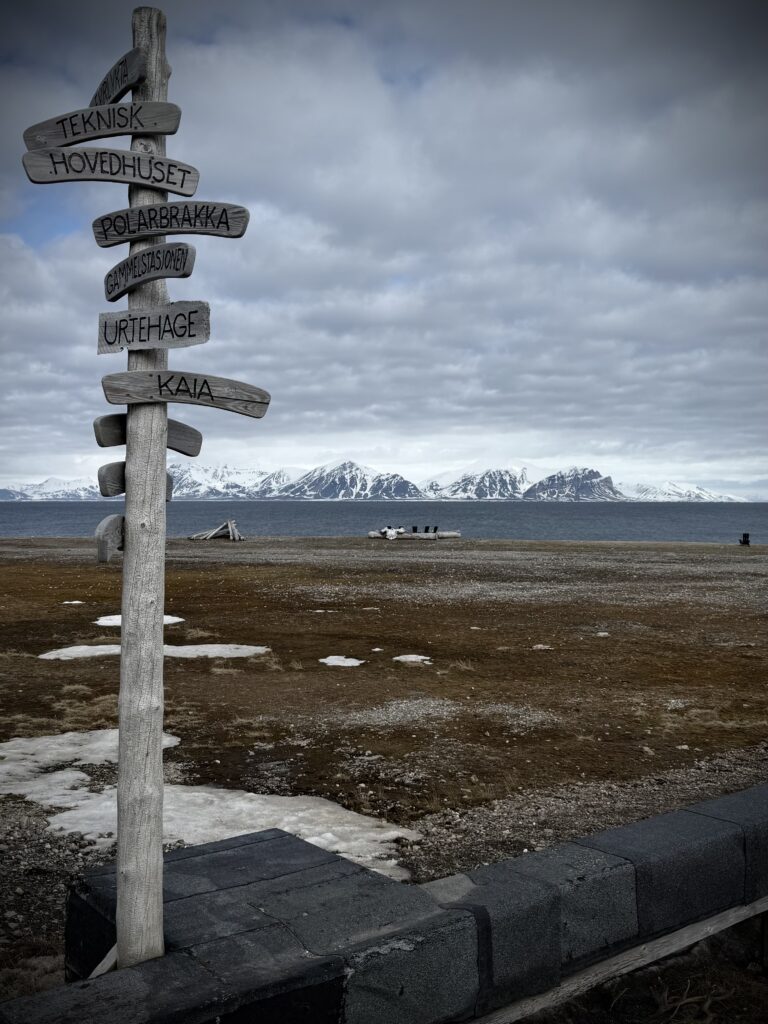
Heat rises
Svalbard itself is as beautiful as it is dangerous and inhospitable, and one needs to be armed against polar bear attacks even on the outskirts of Longyearbyen. But our conversations with local officials in the town revealed just how active Russia and, to a lesser extent, China, are in the High North. Russia has been trying to systematically spread narratives to diminish respect for and acknowledgement of Norway’s clear sovereign control of the Svalbard archipelago, which is as large as Belgium, the Netherlands, and Luxembourg combined.
Russia has been dusting off Soviet nostalgia by hosting Victory Day parades in Barentsburg, an isolated and nearly defunct Russian mining town located more than an hour by boat from Longyearbyen. Russian residents there have been observed wearing Soviet-era coal mining uniforms. Through binoculars, we saw a tattered Soviet flag flying; another Soviet flag has reportedly been placed atop a mountain peak at the nearly abandoned Russian settlement of Pyramiden. All these acts are intended both to antagonize the Norwegian hosts and to cultivate evocative messaging back home in Russia. While Russia does have a limited history in Svalbard, some observers we spoke with felt that Moscow has been contriving deeper cultural and historical connections than are reflected by the facts. It is hard to imagine that these are simply isolated examples of nostalgic revivalism rather than an intentional and coordinated initiative by the Kremlin.
Provocatively, over the past year, Russia’s deputy prime minister has appeared to draw veiled parallels between Ukraine and Svalbard. Russia also prominently featured Svalbard in its national strategy for minerals, approved by Putin in 2020, zeroing in on Svalbard’s oil- and mineral-rich continental shelf. In addition, Moscow has proposed establishing an international research center on the island staffed by members of the BRICS group of emerging economies as another effort to “internationalize” the island chain. There are accusations of sabotage as part of asymmetric warfare tactics by Russia, with an undersea cable from Svalbard being mysteriously damaged in 2022.
Russia has also accused Norway of militarizing Svalbard. Moscow cites the Svalbard Treaty, which gives Norway sovereignty over the island while restricting activity for “warlike purposes.” Perched atop a hill near Longyearbyen, the sprawling KSAT satellite field (known as SvalSat) has been a source of Russian complaints, as has the Norwegian Coast Guard’s activities around Svalbard’s waters. Citizens of signatory countries, including the United States, China, and Russia, can live on Svalbard without visas, but Russia has exploited this ambiguity to create confusion over the treaty’s intentions.
China also has a presence in Svalbard. China’s Yellow River Station at Ny-Ǻlesund, part of the Polar Research Institute of China, was established in 2003. In addition, China has access to a remote sensing station in Sweden. Chinese nationals are sometimes observed trying to buy property in Longyearben, but none of them have been successful to date (real estate and land purchases are tightly restricted in Svalbard). For its part, China has also referenced the Svalbard Treaty to bolster its Arctic rights. Although Russia is the main focus for Oslo, Norwegian analysts and policymakers acknowledged to us that China’s ambitions in the Arctic appear to include Svalbard.
“Our neighbor to the east”
As world leaders gathered in The Hague for the NATO Summit this past month, the Alliance’s approach toward Russia was far from unified or resolved. NATO has emphasized its strategic approach vis-à-vis the High North, but places such as Svalbard could test the Alliance in unexpected ways. US threats against Greenland have also piqued concerns about the United States’ posture toward Svalbard. Norway has emphasized its sovereignty over Svalbard and its view that the Article 5 collective defense clause of the North Atlantic Treaty applies to the archipelago.
Strategically, Russia wants to preserve its ability to threaten and reach the United States using its fleet on the Kola Peninsula. It has designs on extensive modernization and recapitalization. According to a public report released by Norway’s intelligence service in February, Russia’s navy has struggled to modernize its fleet due in part to Moscow’s war against Ukraine. Moscow’s plans have also been stymied by mismanaged resources and project schedules, Western sanctions, the difficulty of replacing key parts and equipment, and production issues. Russia aims to build up its troop presence in its newly reestablished Leningrad and Moscow military districts, but as a recent open-source Finnish military intelligence assessment notes, the war in Ukraine will temper that ambition for now. The Nordic and Baltic countries also rightfully remain sharply focused on Russian and, to a lesser extent, Chinese hybrid actions in the Arctic, but this problem should not be theirs alone to bear.
With tensions simmering in the High North, and Russian aggression a long-term possibility, the United States must sustain cooperation with NATO allies to help secure the region. Failure to do so could make the GIUK gap and the Bear Gap, between Svalbard and the northern tip of Norway, more vulnerable to penetration from Russia’s fleet of ballistic missile and attack submarines. Despite Russia’s challenges, this fleet is steadily becoming quieter and more capable. Washington should not underestimate this region’s significant role in countering Russian nuclear capabilities.
Norway recently rolled out its new long-term defense plan for 2025-2036, with a planned addition of 611 billion kroner (about $60 billion). In the plan, Oslo aims to expand defense production and bolster spare parts; build out defense civilian, conscript, and reserve elements; expand its role in NATO, along with new members Finland and Sweden; and build up naval and air defense capabilities. Norway also seeks to build situational awareness in the High North through an emphasis on space, air patrol, drones, and sensors to monitor the region. These efforts have strong support across Norway’s political parties.
In officials’ own words in Norway’s national security strategy, “Norway’s relations with Russia in the High North have traditionally been stable,” which was once a source of pride for Oslo. But as the situation with Svalbard illustrates, things have changed. “Now, however,” the strategy notes, “our neighbor to the east has become more dangerous.”
Tressa Guenov is the director for programs and operations and a senior fellow at the Scowcroft Center for Strategy and Security at the Atlantic Council. Previously, she was the US principal deputy assistant secretary of defense for international security affairs in the Office of the Under Secretary of Defense for Policy at the US Department of Defense.
Ian Brzezinski is a resident senior fellow with the Scowcroft Center for Strategy and Security and former US deputy secretary of defense for Europe and NATO policy.
Note: The Atlantic Council delegation’s visit to Norway was sponsored by the Norwegian Ministry of Defence.
Further reading
Fri, May 30, 2025
The frontier is the front line: On climate resilience for infrastructure and supplies in Canada’s Arctic
Issue Brief By Jeffrey Reynolds, Kristen Taylor
The front lines of strategic competition now run through the Arctic. Ottawa must do more to enhance its military readiness and infrastructure preparedness in the region.
Wed, Sep 6, 2023
Alternative security futures in the High North
Issue Brief By David Auerswald
Climate change, combined with increasing geopolitical competition and hostilities, has focused renewed attention on national security interests in the Arctic. By 2035, how will those variables combine to influence the High North?
Wed, Aug 21, 2024
How a ‘Free North’ strategy can ensure Arctic and Baltic security
New Atlanticist By
The United States and its allies must work together to counter Russian and Chinese malign activity in the Arctic and Baltic regions.
Image: Signs outside Longyearbyen airport indicate distances to various metropolitan areas, including Hamburg, Kiev, and Moscow. Longyearbyen is often referred to as the northernmost place on earth. Steffen Trumpf/dpa via REUTERS
